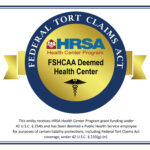Prostate cancer is the second leading cause of cancer-related death in American men, according to the American Cancer Society. As September marks Prostate Cancer Awareness Month, our doctors shared a few facts you should know. Let’s take a look:
Learn more about the prostate
Your prostate is a gland in the lower part of your stomach, near the bladder and urethra. Testosterone regulates your prostate and produces semen. Semen is made up of sperm that leaves the urethra during ejaculation. If there’s a group of cancerous cells that form over the prostate, that’s what we call prostate cancer. Without early detection and proper treatment, these cancerous cells could spread throughout the body.
Know your risk factors
You might think of prostate cancer as an “old man’s disease,” but that’s not true. Several risk factors could increase your chances of having it. African American men are more likely to have prostate cancer. Men who eat high-fat diets have an increased risk of prostate cancer. If your brother or father had prostate cancer, your risk of developing it doubles. Also, if you have an inherited genetic mutation of the BRCA1 and/orBRCA2 gene or have Lynch syndrome, you’re at more increased risk of developing it.
Early detection is key
Early stage prostate cancer doesn’t show any symptoms. That’s why screenings are so important. Yearly prostate screenings should start regularly at age 50. Men with higher risk factors should start their screenings at age 40. Your doctor will talk to you about which type of screening is right for you. These are:
- Prostate-Specific Antigen (PSA) Test: This simple blood test looks at the levels of PSA (a substance that your prostate gland produces) in your blood. If you have high levels of PSA, you might be at more risk for having prostate infection, inflammation or cancer.
- Digital Rectal Examination (DRE): Your doctor will put a gloved, lubricated finger inside your rectum to check for any irregularities in the prostate. Further testing will be needed if any irregularities are discovered.
“Unfortunately, most men don’t come see the doctor until they have a health problem,” says Dr. Ariga. “And since there aren’t many warning signs of early-stage prostate cancer, we encourage men to make these prostate screenings part of their yearly routine. That’s because if we diagnose prostate cancer early, it’s very curable.”
You have a variety of treatment options
If you have been diagnosed with prostate cancer, don’t panic. There are so many options for treating prostate cancer. Your age, health, size of your prostate and individual preferences can help determine which option is right for you. Talking to your doctor about your options (and getting a second opinion) is recommended. Here are a few common treatments:
- Observation: Luckily, prostate cancer is a slow-growing cancer, which means it might be right to choose this option before looking into another treatments. With this method, your doctor will regularly check your PSA levels. If the levels start to rise, we can talk about a more aggressive option to treat the cancer.
- Surgery to remove the prostate: This is an option for men whose cancer is located only in the prostate. During surgery, we’ll remove the prostate gland, surrounding tissue and nearby lymph nodes.
- Radiation therapy: Your doctor will use high-powered energy to kill prostate cancer cells. Your doctor will discuss which type of radiation therapy option could work best for you.
- Medication: We might suggest medications that can stop your body from producing testosterone. The reason why we would prescribe these medications is that prostate cells need testosterone to grow. If we can stop the testosterone, it could cause the cancer cells to grow more slowly or die.
“We know a prostate cancer diagnosis can be overwhelming and scary, but you’re not facing the diagnosis alone,” Dr. Ariga says. “We’ll help you understand the risks and benefits of each option. We want you to feel informed and empowered about your treatment plan.”






